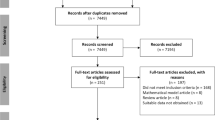Summary
Several different mechanisms that may produce decreasing functional responses are investigated using models that assume that an optimally foraging consumer is exploiting one or two resources. Decreasing functional responses are associated with situations in which there are costs to resource consumption. If the process of resource acquisition has costs, decreasing functional responses may occur when there is a single homogeneous resource. If the cost is solely a function of the amount of resource ingested, decreasing functional responses on a single resource do not occur. Both types of cost can produce decreasing functional responses when there are two resource types and a trade-off relationship between consumption of one and consumption of the other. Decreasing functional responses seem to be most likely to occur on a food that yields high benefits and costs per unit of foraging time or effort when there is an alternative resource which yields low benefits and costs. Given this type of foraging choice, the functional response is most likely to decrease when the benefits of ingestion increase at a decreasing rate, and the costs of ingestion increase at an increasing rate with amount ingested. An important and unique consequence of decreasing functional responses is the possibility of population cycles in differential equation models of consumer-resource systems with non-reproducing resources; this is illustrated with a simple comsumer-resource model.
Similar content being viewed by others
References
Abrams, P. A. (1977) Density independent mortality and interspecific competition: a test of Pianka's niche overlap hypothesis.Amer. Natur. 111, 539–52.
Abrams, P. A. (1980) Consumer functional response and competition in consumer-resource systems.Theor. Pop. Biol. 17, 80–102.
Abrams, P. A. (1982) Functional responses of optimal foragers.Amer. Natur. 120, 382–90.
Abrams, P. A. (1984) Foraging time optimization and interactions in food webs.Amer. Natur. 124, 80–96.
Abrams, P. A. (1986) Adaptive responses of predators to prey and prey to predators; the failure of the arms race analogy.Evolution 40, 1229–47.
Abrams, P. A. (1987a) Alternative models of character displacement. II. Displacement when there is competition for a single resource.Amer. Natur. 130, 271–82.
Abrams, P. A. (1987b) The functional responses of adaptive consumers of two resources.Theor. Pop. Biol. 32, 262–88.
Abrams, P. A. (1987c) Indirect interactions between species that share a predator: varieties of indirect effects. InPredation, Direct and Indirect Impacts on Aquatic Communities (eds W. C. Kerfoot and A. Sih) University Press of New England, Dartmouth, USA, pp. 38–54.
Abrams, P. A. (1989) Adaptive responses to competition when there are both positive and negative responses to resource densities: The case of generalist herbivores.Evolutionary Ecology, submitted.
Armstrong, R. A. (1976) The effects of predator functional response and prey productivity on predator-prey stability: a graphical approach.Ecology 57, 609–11.
Begon, M., Harper, J. L. and Townshend, C. R. (1986)Ecology: Individuals, Populations and Communities, Sinauer, Sunderland, MS, USA.
Belovsky, G. E. (1984) Herbivore optimal foraging: a comparative test of three models.Amer. Natur. 124, 97–115.
Belovsky, G. E. (1986a) Generalist herbivore foraging and its role in competitive interactions.Amer. Zool. 26, 51–70.
Belovsky, G. E. (1986b) Optimal foraging and community structure: implications for a guild of generalist grassland herbivores.Oecologia 70, 35–52.
Colton, T. F. (1987) Extending functional response models to include a second prey type: an experimental test.Ecology 68, 900–12.
Curio, E. (1976)The Ethology of Predation, Springer Verlag, Berlin.
Dunbrack, R. L. and Giguerre, L. A. (1987) Adaptive responses to accelerating costs of movement: a bioenergetic basis for the type-III functional response.Amer. Natur. 130, 147–60.
Gilliam, J. F. and Fraser, D. F. (1987) Habitat selection under predation hazard: test of a model with foraging minnows.Ecology 68, 1856–62.
Grubb, T. C. Jr and Greenwald, L. (1982) Sparrows and a brushpile: foraging responses to different combinations of predation risk and energy cost.Anim. Behav. 30, 637–40.
Hassell, M. P. (1978)Arthropod Predator-Prey Systems, Princeton University Press, Princeton, USA.
Holbrook, S. J. and Schmitt, R. J. (1988) The combined effects of predation risk and food reward on patch selection.Ecology 69, 125–34.
Holling, C. S. (1959) Some characteristics of simple types of predation and parasitism.Canad. Ent. 91, 385–98.
Holling, C. S. (1965) The functional response of predators to prey density and its role in mimicry and population regulation.Mem. Ent. Soc. Canad. 45, 1–60.
Holling, C. S. (1966) The functional response of invertebrate predators to prey density.Mem. Ent. Soc. Canad. 48, 1–86.
MacArthur, R. H. (1972)Geographical Ecology, Harper and Row, NY, USA.
Monod, J. (1942) Recherches sur la croissance des cultures bacteriennes. Hermann et Cie, Paris.
Mori, H. and Chant, D. A. (1966) The influence of prey density, relative humidity, and starvation on the predacious behavior ofPhytoseiulus persimilis Athias-henriot (Acarina: Phytoseiidae).Canad. J. Zool. 44, 483–91.
Nelmes, A. J. (1974) Evaluation of the feeding behaviour ofPrionchulus punctatus (Cobb), a nematode predator.J. Anim. Ecol. 43, 553–66.
Pianka, E. R. (1987)Evolutionary Ecology, 4th Edn, Harper & Row, NY, USA.
Schoener, T. W. (1976) Alternatives to Lotka-Volterra competition: models of intermediate complexity.Theor. Pop. Biol. 10, 309–33.
Stephens, D. W. and Krebs, J. R. (1986)Foraging Theory, Princeton University Press, Princeton, USA.
Taylor, R. J. (1984)Predation, Chapman and Hall, NY, USA.
Tilman, G. D. (1982)Resource Competition and Community Structure, Princeton University Press, Princeton, USA.
Tostawaryk, W. (1972) The effect of prey defense on the functional response ofPodius modestus (Hemiptera: Pentatomidae) to densities of the sawfliesNeodiprion swainei andN. pratti banksianae (Hymenoptera: Neodiprionidae).Canad. Ent. 104, 61–70.
Author information
Authors and Affiliations
Rights and permissions
About this article
Cite this article
Abrams, P.A. Decreasing functional responses as a result of adaptive consumer behavior. Evol Ecol 3, 95–114 (1989). https://doi.org/10.1007/BF02270915
Issue Date:
DOI: https://doi.org/10.1007/BF02270915




